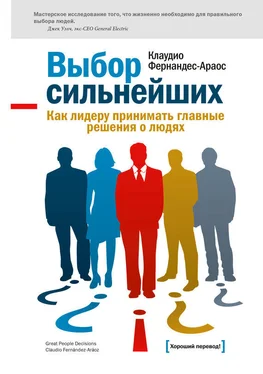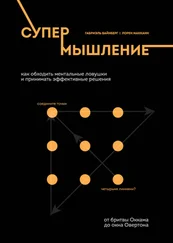E.D. Pulakos, N. Schmitt, D. Whitney, and M. Smith, “Individual Differences in Interviewer Ratings: The Impact of Standardization, Consensus Discussion, and Sampling Error on the Validity of a Structured Interview,” Personnel Psychology 49, 1996: 85–102.
Robert L. Dipboye and Kenneth E. Podratz, “Estimating Validity at the Level of the Interviewer: The Case for Individual Differences,” Rice University, PowerPoint presentation accessed through Google, August 2006.
R. Taft, “The Ability to Judge People,” Psychobgical Bulletin 52, 1955.
P.M. Rowe, “Unfavorable Information and Interviewer Decisions,” in The Employment Interview: Theory, Research and Practice, edited by R.W. Eder and G.R. Ferris (Thousand Oaks, CA: Sage, 1989).
Valerie I. Sessa and Jodi J. Taylor, Executive Selection: Strategies for Success (Center for Creative Leadership, Jossey-Bass/Wiley, 2000), p. 88.
R.W. Eder and M.R. Buckley, “The Employment Interview: An Interactionist Perspective,” in Research in Personnel and Human Resource Management, 6th ed., edited by G.R. Ferris and K.M. Rowland (Greenwich, CT: JAI Press, 1988).
Интернет-издание корпоративного журнала THE FOCUS online ( http://www.ezifocus.com/content/thefocus/issue/article.php/article/54300471), vol. X/l, 2006. Авторская тема номера – Jim Collins: “Filling the Seats: How People Decisions Help Build a Great Company.”
Из частной беседы с Говардом Стивенсоном, Буэнос-Айрес, июнь 2006 г.
Из частной беседы с Джеком Уэлчем, Бостон, февраль 2006 г.
Jerry Useem, “Have They No Shame?” Fortune, April 14, 2003: 57.
Laura Nash and Howard Stevenson, Just Enough (Hoboken, NJ: John Wiley & Sons, 2004), p. 45.
“CEO Pay: A Window into Corporate Governance,” Knowledge@Wharton, February 8, 2006 ( http://knowledge.wharton.upenn.edu/article.cfm?articleid=1481).
“SEC’s Spotlight on Executive Pay: Will It Make a Difference?” Knowledge@Wharton, May 17, 2006. ( http://knowledge.wharton.upenn.edu/article.cfm?articleid=1481).
James Surowiecki, The Wisdom of Crowds (Doubleday, June 2004), pp. 113–114.
Jeffrey Pfeffer and Robert I. Sutton, Hard Facts, Dangerous Half-Truths, and Total Nonsense (Harvard Business School Press, 2006), p. 133.
Daniel Goleman, Social Intelligence. The New Science of Human Relationships (New York: Bantam/Dell, September 2006), p. 271.
Dan Baker, Cathy Greenberg, and Collins Hemingway, What Happy Companies Know (Pearson Prentice Hall, 2006), p. 62.
Описание потенциальной выгоды компенсационной системы по принципу «все как один» содержится в статье “A Simpler Way to Pay,” Harvard Business Review , April 2001: 53–61.
Marshall W. Van Alstyne, “Create Colleagues, Not Competitors,” Harvard Business Review, September 2005: 24.
Valerie I. Sessa and Jodi J. Taylor, Executive Selection: Strategies for Success (Center for Creative Leadership, Jossey-Bass/Wiley, 2000), p. 48.
Jeffrey Pfeffer and Robert I. Sutton, Hard Facts, Dangerous Half-Truths, and Total Nonsense (Harvard Business School Press, 2006), p. 123.
THE FOCUS online ( http://www.ezifocus.com/content/thefocus/ issue/article.php/article/54300471), vol. X/l, 2006. Заглавная тема номера Jim Collins: “Filling the Seats: How People Decisions Help Build a Great Company.”
Из частной беседы с Джеком Уэлчем, Бостон, февраль 2006 г.
Marshall W. Van Alstyne, “Create Colleagues, Not Competitors,” Harvard Business Review, September 2005: 28–30.
Jeffrey Pfeffer and Robert I. Sutton, Hard Facts, Dangerous Half-Truths, and Total Nonsense (Harvard Business School Press, 2006), p. 196.
Полет в космос «Аполлона-13» был впоследствии отмечен в одноименном кинофильме Рона Говарда (1995 г.)
Valerie I. Sessa and Jodi J. Taylor, Executive Selection: Strategies for Success (Center for Creative Leadership, Jossey-Bass/Wiley, 2000), p. 94.
John J. Gabarro, The Dynamics of Taking Charge (Harvard Business School Press, 1987), Chapter 1, Introduction, p. 1.
“Bio-Tech CEO Survey 2005: The First 100 Days,” Egon Zehnder International.
“That Tricky First 100 Days: Executive Onboarding,” The Economist, July 15, 2006.
Daniel Goleman, Social Intelligence: The New Science of Human Relationships (Bantam Books, September 2006), p. 271.
H. Mintzberg, “Managerial Work: Analysis from Observation,” Management Science 18(2), 1971: B97–B110.
John J. Gabarro, The Dynamics of Taking Charge (Harvard Business School Press, 1987), p. 57.
Valerie I. Sessa and Jodi J. Taylor, Executive Selection: Strategies for Success (Center for Creative Leadership, Jossey-Bass/Wiley, 2000), Preface, p. XIV.
Jay A. Conger and David A. Nadler, “When CEOs Step Up to Fail,” MIT Sloan Management Review 45(3), spring 2004.
Kevin P. Coyne and Bobby S.Y. Rao, “A Guide for the CEO-Elect,” The McKinsey Quarterly 3, 2005: 47–53.
“Financial Services 2005 Survey: The First Three Months of CEOs,” Egon Zehnder International, unpublished work.
Tsun-Yan Hsieh and Stephen Beat, “Managing CEO Transitions,” The McKinsey Quarterly 2, 1994.
Daniel Goleman, Social Intelligence: The New Science of Human Relationships (Bantam Books, September 2006), p. 43.
Daniel Goleman, Social Intelligence: The New Science of Human Relationships (Bantam Books, September 2006), p. 63.
Daniel Goleman, Social Intelligence: The New Science of Human Relationships (Bantam Books, September 2006), p. 64.
Stephen J. Dorgan, John J. Dowdy, and Thomas M. Rippin, “Who Should and Shouldn’t Run the Family Business,” The McKinsey Quarterly 3, summer 2006: 13–15.
Bill Frymire, “The Search for Talent (Why It’s Getting Harder to Find),” The Economist, October 7, 2006.
Читать дальше
Конец ознакомительного отрывка
Купить книгу












